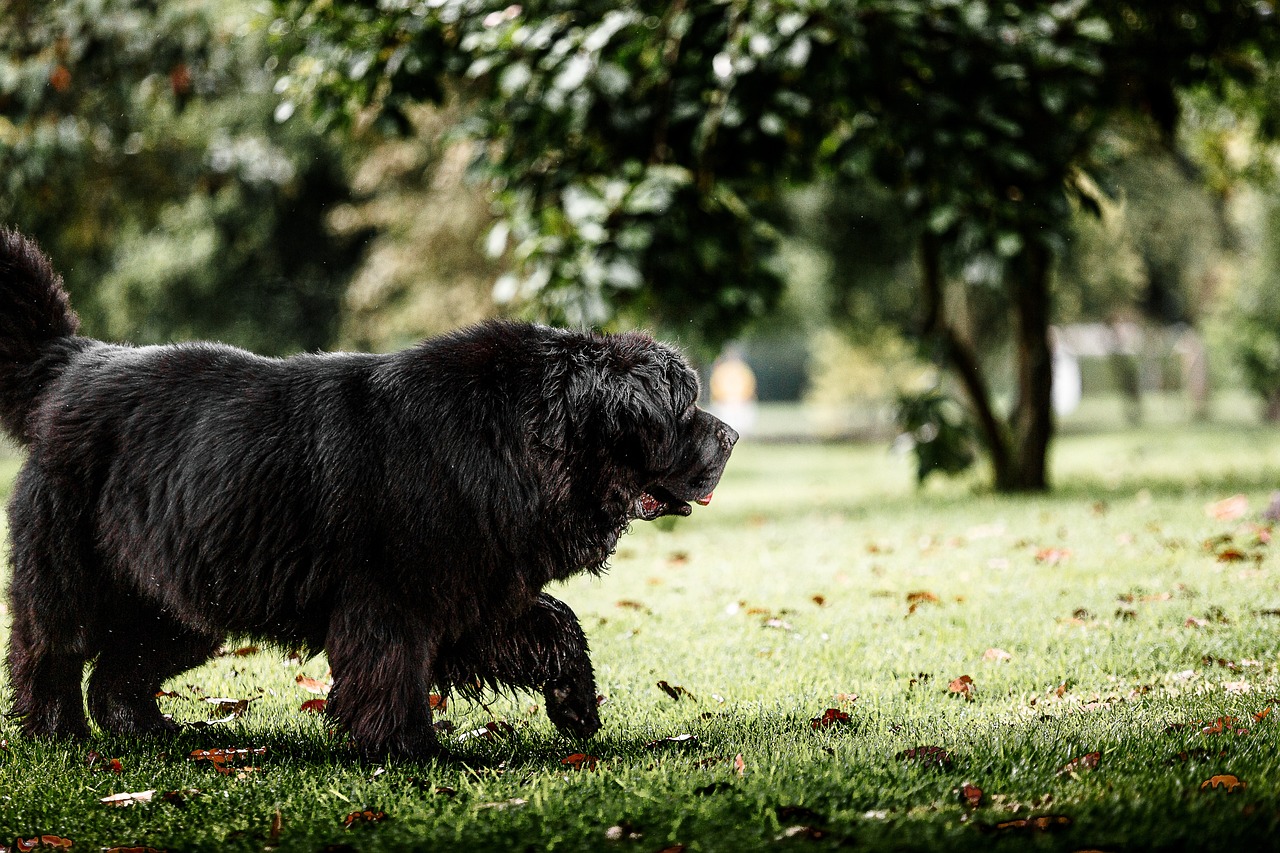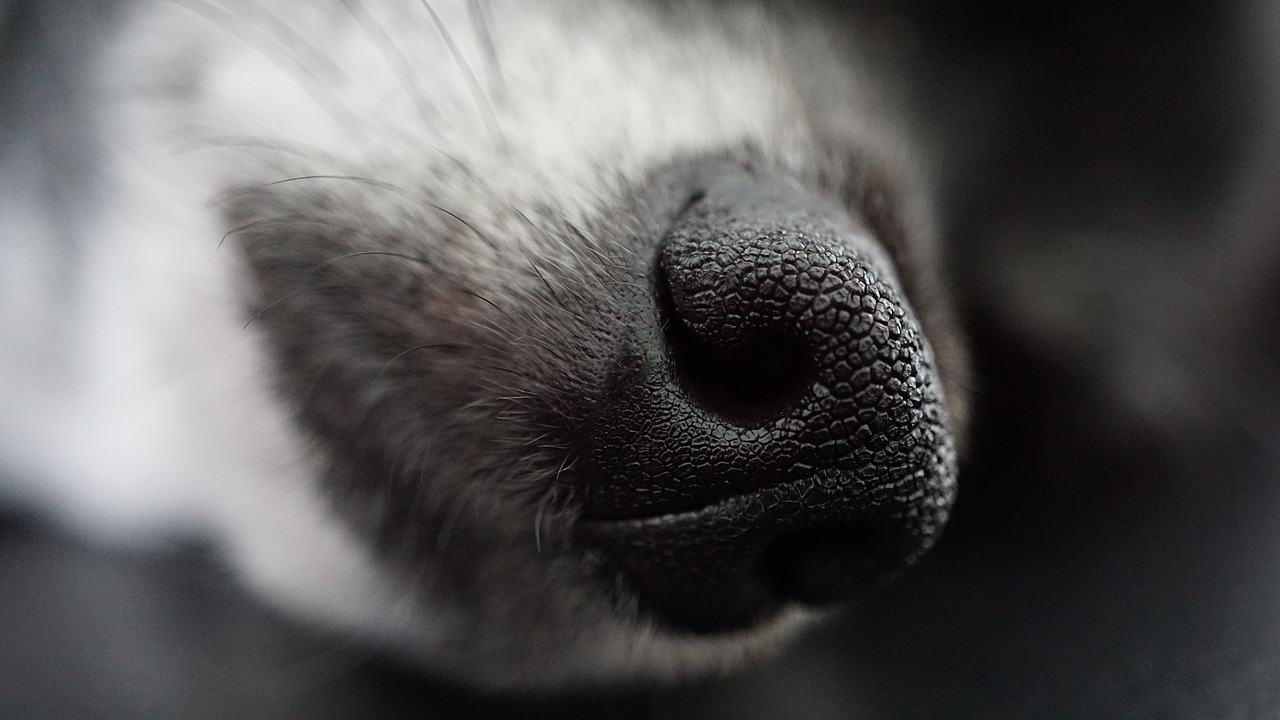Tips for Teaching Your Dog to Signal for Attention
Training your dog to signal for attention can be one of the most rewarding experiences for both you and your furry companion. Imagine a world where your dog can effectively communicate their needs, making your bond even stronger. In this article, we will explore effective strategies to help your dog express when they want your attention, ensuring you both understand each other better. Whether you're a seasoned dog owner or a first-time pet parent, these tips will guide you through the process, making it not just productive but also enjoyable.
Before diving into training techniques, it’s essential to grasp how dogs naturally communicate their needs and emotions. Dogs are incredibly expressive creatures, using a combination of barks, whines, body language, and facial expressions to convey their feelings. For instance, a wagging tail can indicate excitement, while a lowered head might signal submission or discomfort. By observing these signals, you can better understand when your dog is seeking attention. This understanding is crucial because it lays the foundation for teaching them specific signals that you can recognize. Just like humans have different ways of saying "I need help," dogs have their own unique methods of asking for your attention.
Selecting a clear and consistent signal is essential in your training journey. The signal you choose should be something that your dog can easily learn and associate with the action of seeking your attention. Here are a few options to consider:
- Verbal Commands: Simple words like "come," "here," or "attention" can be effective.
- Physical Signals: Gestures like raising your hand or tapping your leg can also work.
- Sound Signals: A clicker or a bell can be used to indicate a desire for attention.
By establishing a consistent signal, you create a clear line of communication between you and your dog, making it easier for them to express their needs.
Verbal commands can be particularly effective in teaching your dog to signal for attention. Dogs are naturally inclined to respond to sounds, so using specific words or phrases can create a strong association. For example, if you consistently use the word "attention" every time you want your dog to come to you, they will eventually learn to associate that word with the action of seeking your presence. Be sure to use a positive tone and clear pronunciation. Consistency is key—if you choose "come" today, don’t switch to "here" tomorrow!
Incorporating a clicker into your training sessions can enhance the learning process significantly. A clicker is a small device that makes a distinct sound, and it acts as a marker for positive behavior. When your dog signals for attention correctly, click the device immediately followed by a treat. This method reinforces the behavior and helps your dog learn to signal more effectively. Over time, the click sound becomes synonymous with receiving attention, making your dog more likely to use the signal.
Using treats as rewards can be a powerful motivator for your dog. Dogs are naturally food-driven, and incorporating treats into your training can encourage them to learn quicker. When your dog successfully signals for attention, reward them with a treat, praise, or affection. This positive reinforcement not only helps them associate the action with a reward but also strengthens your bond. Remember to use healthy treats to keep your dog in tip-top shape!
Non-verbal cues are also powerful tools for communication. Dogs are highly attuned to body language, so utilizing gestures can be effective in your training process. For instance, you might use a specific hand signal or even tap your leg to indicate that you want your dog to come over. Pay attention to how your dog responds to different gestures, and be sure to use the same ones consistently. This will help your dog understand what you expect from them, further enhancing your communication.
Consistency is key in dog training, and establishing a structured routine can significantly reinforce your dog’s attention-seeking signals. Create a training schedule that fits into your daily life—this could be a few minutes each day or longer sessions a few times a week. The important thing is to stick to it! Dogs thrive on routine, and the more they practice, the better they will become at signaling for your attention.
Regular practice sessions are crucial for solidifying your dog's understanding of the signals. Aim for short, focused training sessions—about 5 to 10 minutes each day. This keeps your dog engaged without overwhelming them. During these sessions, reinforce the signals you’ve chosen, and always end on a positive note. If your dog successfully signals for attention, be sure to celebrate their success with treats and affection!
Monitoring your dog's progress is vital in the training process. Keep a journal or log to track their improvements and any challenges you encounter. This can help you assess their understanding and adjust your training methods accordingly. If you notice that your dog is struggling with a particular signal, don’t hesitate to revisit the basics or try a different approach. Remember, training is a journey, and every dog learns at their own pace.
Q: How long will it take for my dog to learn to signal for attention?
A: The time it takes varies by dog, but with consistent practice, many dogs can learn within a few weeks.
Q: What if my dog doesn’t respond to verbal commands?
A: If your dog seems unresponsive, consider using non-verbal cues or adjusting your training methods to find what works best for them.
Q: Can older dogs learn to signal for attention?
A: Absolutely! Dogs of all ages can learn new behaviors with patience and positive reinforcement.

Understanding Canine Communication
Dogs are not just pets; they are our companions, confidants, and sometimes even our therapists. Understanding how they communicate is vital for building a strong bond with your furry friend. Dogs have their own unique ways of expressing their needs and emotions, and as a responsible pet owner, it's essential to recognize these signals. Think of it as learning a new language—one that is filled with barks, whines, wagging tails, and even body movements.
One of the most fascinating aspects of canine communication is that it encompasses both verbal and non-verbal cues. For instance, a simple bark can mean a multitude of things depending on its tone, frequency, and context. A high-pitched yip might indicate excitement or playfulness, while a deep bark may signal alertness or a warning. Additionally, dogs use their bodies to convey messages. A wagging tail doesn't always mean happiness; it can also indicate nervousness or agitation. Thus, understanding these nuances can significantly enhance your ability to respond appropriately to your dog's needs.
Moreover, dogs are incredibly intuitive creatures. They can pick up on human emotions and often mirror our feelings. If you're feeling stressed, your dog might respond by becoming more anxious or clingy. This empathy is a two-way street; when you learn to interpret your dog's signals, you can create a more harmonious living environment. To help you get started, here are some common canine communication signals to watch for:
- Barking: Can indicate excitement, alertness, or a desire for attention.
- Whining: Often a sign of anxiety or a request for something.
- Tail Wagging: Depending on the speed and position, it can indicate happiness, nervousness, or even aggression.
- Body Posture: A relaxed body means comfort, while a stiff posture can indicate tension or aggression.
By paying attention to these signals, you can better understand what your dog is trying to tell you. This understanding is crucial when you start teaching your dog to signal for attention. The more you recognize their natural communication style, the easier it will be to guide them towards more explicit ways of asking for your attention. Remember, patience is key! Just like any new language, it takes time to become fluent.

Choosing the Right Signal
When it comes to training your dog to signal for attention, one of the most crucial elements is . Think of this signal as a language that both you and your furry friend can understand. Just like humans use different words and gestures to communicate, dogs can also be trained to respond to specific cues. The key is to select a signal that is clear, consistent, and easy for your dog to recognize.
First, consider the type of signal you want to use. There are two main categories: verbal signals and non-verbal signals. Each has its advantages, and the choice often depends on your dog's personality and your training style. For instance, some dogs may respond better to verbal commands like "Hey!" or "Look!" while others might find visual cues like a hand wave more effective.
When selecting a verbal signal, it’s important to choose a word or phrase that is distinct and not commonly used in everyday conversation. This helps your dog to associate the sound with the action of seeking attention. For example, you might use the word "Attention!" or "Here!" as your chosen signal. Make sure to use it consistently during training sessions, so that your dog learns to associate the word with the desired behavior.
On the other hand, if you prefer to use non-verbal signals, consider gestures or body language. Dogs are incredibly perceptive to visual cues, and a simple hand signal can be just as effective as a verbal command. You might decide to raise your hand, clap, or even tap your leg to get their attention. The beauty of non-verbal signals is that they can be used in various situations, especially when you want to communicate without making noise.
To help decide which signal is best for you and your dog, here are a few tips:
- Observe your dog: Pay attention to how your dog reacts to different sounds and gestures. This can give you insight into which signal might resonate best with them.
- Test it out: Try using a few different signals during your training sessions and see which one your dog responds to most eagerly.
- Be consistent: Once you settle on a signal, stick with it! Consistency is key to helping your dog learn and understand what you want from them.
Remember, the goal is to create a strong association between the signal and the action of seeking attention. The more you practice, the clearer the connection will become. Over time, you’ll find that your dog will start to signal for attention on their own, making your bond even stronger. So, whether you choose a vocal command or a hand gesture, make sure it’s something that feels natural for both you and your pup!
Verbal Signals
When it comes to teaching your dog to signal for attention, are a powerful tool in your training arsenal. Dogs are incredibly perceptive creatures, and they can learn to associate specific words or phrases with actions or needs. Think of it like teaching a child their first words; with patience and consistency, your furry friend can learn to communicate effectively. But what words should you choose? Here are some tips to help you get started!
First and foremost, select a simple and clear command. Dogs thrive on consistency, so using a word that is easy to pronounce and distinct from other commands is crucial. For instance, words like "Hey," "Look," or "Attention" can be great starting points. The goal is to create a strong association between the word and the action you want your dog to perform. When your dog signals for attention, immediately use the command you've chosen. Over time, they will begin to connect the dots.
Additionally, it's essential to use a positive tone when giving verbal signals. Dogs are intuitive and can pick up on your emotions. If you sound excited or happy, your dog is more likely to respond positively. Consider this: if someone called you over with a cheerful voice, wouldn't you be more inclined to approach them? The same goes for your dog. Enthusiasm is contagious!
To further reinforce your dog's learning, you can incorporate verbal signals into your daily interactions. For example, every time your dog approaches you for attention, use the chosen command while petting or playing with them. This repetition will help cement the connection in their mind. As they start to understand that saying "Hey" means they’ll get your attention, they'll be more likely to use the signal themselves.
Incorporating verbal signals into your training sessions can also be enhanced with a clicker. When your dog responds to your verbal cue, click the clicker and reward them with a treat. This method not only reinforces the behavior but also creates a clear communication channel between you and your dog. It's like giving them a little high-five for understanding you!
Remember, patience is key. Just like humans, dogs learn at their own pace. Some may grasp the concept quickly, while others may take a bit longer. If you find your dog struggling with a verbal signal, don't hesitate to adjust your approach. You might need to simplify the command or offer additional rewards to motivate them. The goal is to foster a loving and supportive environment where your dog feels encouraged to communicate.
In summary, verbal signals are a fantastic way to enhance communication with your dog. By choosing simple commands, using a positive tone, and incorporating these signals into your daily routine, you'll be well on your way to teaching your furry friend how to signal for attention. Remember, the journey of training is as rewarding as the destination, so enjoy every moment you spend together!
- What are some effective verbal signals I can teach my dog? Simple commands like "Hey," "Look," or "Attention" work well.
- How can I make my dog respond better to verbal signals? Use a positive tone and reinforce with treats or a clicker when they respond correctly.
- How long does it take for a dog to learn verbal signals? It varies by dog; some may learn quickly, while others may take more time. Patience is key!
Using a Clicker
In the world of dog training, can be a game changer. This small device, which makes a distinct clicking sound, serves as a bridge between your dog's behavior and the reward they will receive. Think of it as a magic wand that helps your furry friend understand exactly what they did right. When your dog performs the desired action, you click the device, instantly marking the behavior. This clear communication is essential in teaching your dog to signal for attention.
So, how does it work? The process is simple yet effective. First, you need to condition your dog to the clicker. This means associating the sound of the click with something positive, like a treat. Start by clicking and then immediately giving your dog a treat. Repeat this several times until your dog begins to look for a reward whenever they hear the click. It’s like teaching them that the click is a cue for good things to come!
Once your dog has made this connection, you can begin to incorporate the clicker into your training sessions. For example, if you want your dog to learn to tap your hand with their paw to get your attention, wait until they do it naturally. As soon as they make that move, click! Then, reward them with a treat. This immediate feedback helps your dog understand that tapping your hand is a behavior that gets them what they want—your attention!
It's important to remember that timing is everything. The click should happen the very instant your dog performs the desired behavior. This precision helps your dog to associate the click with the action, making it easier for them to learn. If you wait too long, your dog might not connect the dots, and that can lead to confusion. To keep things organized, consider keeping a training log where you note which behaviors you’re working on and how your dog responds. This can help you track progress and adjust your training methods as needed.
While the clicker is a powerful tool, it's also essential to remain patient and positive throughout the training process. Dogs, like humans, have their good and bad days. Some days they may grasp the concept quickly, while other days they might seem a bit lost. Just like us, dogs thrive on encouragement and positivity. Celebrate their small victories, and don’t be afraid to adjust your approach if something isn’t working.
In summary, using a clicker is a fantastic way to enhance your dog training experience. Not only does it provide clear communication, but it also creates a fun and engaging atmosphere for your dog. With practice and consistency, you’ll find that your furry friend will not only learn to signal for attention but will also develop a stronger bond with you in the process. Remember, training should be a journey filled with joy and discovery for both you and your dog!
Training with Treats
When it comes to teaching your dog to signal for attention, using treats can be a game-changer. Think of treats as your dog’s favorite currency; they hold immense power in motivating your furry friend to learn and engage. The idea is simple: by associating the act of signaling with a tasty reward, you create a positive reinforcement loop that encourages your dog to repeat the behavior. But how do you effectively implement this technique? Let’s break it down.
First, it’s crucial to choose the right treats. Not all treats are created equal! You want something that your dog finds irresistible. This could be small pieces of cooked chicken, cheese, or even special dog treats that they only get during training sessions. The goal is to make the reward so appealing that your dog is excited to participate. You might want to consider a variety of treats and see which ones get your pup wagging their tail the most!
Next, timing is everything. When your dog successfully signals for attention, you need to reward them immediately. This helps them make the connection between the behavior and the reward. Imagine this: your dog nudges you with their nose, and within seconds, they receive a treat. This immediate feedback reinforces their behavior and encourages them to repeat it. If you wait too long, they might not understand what they did right, and the learning process can stall.
Another effective strategy is to gradually reduce the frequency of treats as your dog becomes more proficient at signaling. Initially, you might reward them every time they signal, but over time, you can switch to a variable reward system. This means rewarding them sometimes, but not always. This unpredictability can keep your dog engaged and eager to signal for attention, as they’ll be motivated by the possibility of receiving a treat.
Here’s a brief overview of how to implement treat training:
- Choose the right treats: Find something your dog loves.
- Reward immediately: Give the treat right after they signal.
- Be consistent: Use the same treat and reward system during training.
- Gradually reduce treats: Move to a variable reward system as they learn.
Finally, keep training sessions short and fun! Dogs have shorter attention spans than we do, so aim for sessions that last around 5 to 10 minutes. This keeps your dog engaged without overwhelming them. Make sure to end each session on a positive note—whether it's with a treat, praise, or playtime. This way, your dog will look forward to training sessions instead of seeing them as a chore.
Incorporating treats into your training routine not only enhances your dog’s learning experience but also strengthens the bond between you two. It’s a win-win situation! So grab those treats and get ready to see your dog flourish as they learn to signal for attention.
Q: How long does it take for my dog to learn to signal for attention?
A: The duration can vary significantly depending on the dog’s age, breed, and previous training experiences. Typically, with consistent practice, you might start seeing results within a few weeks.
Q: What should I do if my dog loses interest in treats?
A: If your dog seems to lose interest, try switching up the treats or using a different type of reward, such as toys or playtime. Sometimes, a change can reignite their enthusiasm!
Q: Can I use this method with older dogs?
A: Absolutely! Dogs of all ages can learn new tricks and behaviors. Just be patient and adjust your training methods to suit their needs.
Non-Verbal Signals
When it comes to communicating with our furry friends, non-verbal signals can be incredibly powerful. Dogs are naturally expressive creatures, using their bodies to convey a range of emotions and needs. This means that understanding their body language is crucial for teaching them how to signal for attention effectively. For instance, a dog might nudge you with their nose or paw at you when they want something. These actions are not just random; they are their way of saying, "Hey, I need you!"
To harness these non-verbal signals in your training, it’s essential to observe your dog closely. Notice how they behave when they want your attention. Do they sit by your side and stare at you? Or perhaps they circle around you, wagging their tail? Each of these behaviors can be refined into a specific signal that you can teach them to use consistently. Remember, the goal is to create a clear and recognizable signal that you can respond to, reinforcing the behavior.
Incorporating non-verbal signals into your training routine can be done in several ways. For example, you might decide to use a specific gesture, like raising your hand or pointing, to encourage your dog to respond with their own attention-seeking behavior. This is where consistency plays a vital role. If you decide that a raised hand means it's time for your dog to come to you, make sure to use that gesture every time. Over time, your dog will learn to associate that signal with the action of seeking your attention.
Additionally, it’s worth noting that dogs are very perceptive to our own body language. They can often pick up on subtle cues that we may not even realize we’re giving off. For example, if you lean forward with an open posture, your dog may interpret this as an invitation to approach you. Therefore, being mindful of your own non-verbal signals can enhance the training process significantly. Keeping an open and inviting demeanor can encourage your dog to engage more actively.
To further illustrate the importance of non-verbal communication, here’s a brief table summarizing some common canine body language signals that indicate a desire for attention:
| Dog Signal | Meaning |
|---|---|
| Pawing at you | Seeking attention or playtime |
| Staring | Requesting interaction or focus |
| Tail wagging | Excitement or happiness; wanting to engage |
| Leaning against you | Affectionate gesture, seeking closeness |
By recognizing and responding to these non-verbal cues, you can create a stronger bond with your dog. Training them to signal for attention through their natural behaviors not only makes communication easier but also enriches your relationship. Just like learning a new language, the more you practice and engage with your dog’s signals, the more fluent you will become in understanding their needs.
So, the next time your pup nudges you or gives you that adorable stare, take a moment to consider what they might be trying to tell you. With patience and practice, you can teach them to communicate their desire for attention in ways that are clear and effective.
- What are the most common non-verbal signals dogs use? Dogs often use signals like pawing, staring, tail wagging, and leaning against their owners to express their need for attention.
- How can I teach my dog to signal for attention? Start by observing your dog's natural behaviors and choose a specific action to reinforce. Use consistent signals and positive reinforcement to encourage this behavior.
- Can I use non-verbal signals in conjunction with verbal commands? Absolutely! Combining both verbal and non-verbal signals can enhance communication and make training more effective.

Establishing a Training Routine
When it comes to teaching your dog to signal for attention, establishing a consistent training routine is absolutely essential. Just like humans thrive on structure, dogs also benefit from a predictable schedule. Think of it this way: if you were trying to learn a new skill, wouldn’t you want to practice it regularly? The same principle applies to your furry friend. A well-structured routine not only helps your dog understand what is expected of them but also strengthens the bond between you two as you work together towards a common goal.
Consistency is key in dog training. This means that you should aim to practice the attention-seeking signals at the same times each day. For instance, you might decide to train your dog in the morning before breakfast and again in the evening. By doing this, your dog will begin to anticipate these training sessions and will be more eager to participate. Additionally, it helps to create a calm and distraction-free environment during these sessions. A quiet space allows your dog to focus solely on you and the training, making it easier for them to grasp the concept of signaling for attention.
One effective way to establish a routine is to set aside specific times for training throughout the week. You can use a simple table to outline your training schedule:
| Day | Training Time | Focus Area |
|---|---|---|
| Monday | 8:00 AM | Verbal Signals |
| Tuesday | 6:00 PM | Non-Verbal Signals |
| Wednesday | 8:00 AM | Clicker Training |
| Thursday | 6:00 PM | Treat Motivation |
| Friday | 8:00 AM | Review All Signals |
This table provides a clear visual representation of your training routine, making it easier for you to stick to your plan. Having a set focus area for each session allows for targeted practice, which can accelerate your dog’s learning process.
Furthermore, it’s important to remember that training should be fun! Incorporate playtime and positive reinforcement into your routine. Celebrate small victories, whether it’s a wagging tail or a successful signal for attention. This positive feedback not only motivates your dog but also reinforces the behavior you want to encourage. After all, dogs are social creatures that thrive on interaction and praise.
In addition to regular training sessions, tracking your dog’s progress can be incredibly beneficial. Keep a journal or use a mobile app to note down your dog’s achievements and any areas that may need more work. This not only helps you stay organized but also allows you to adapt your training methods as needed. If you notice that your dog is struggling with a particular signal, you can adjust your approach or spend more time on that specific area during your training sessions.
In conclusion, establishing a training routine is a vital step in teaching your dog to signal for attention effectively. By creating a structured plan, maintaining consistency, and keeping the training enjoyable, you’ll not only enhance your dog’s learning experience but also strengthen the bond you share. So grab those treats, set your training schedule, and get ready to watch your dog flourish!
- How long should each training session last? Aim for 5 to 15 minutes, depending on your dog's attention span.
- What if my dog doesn’t seem interested in training? Try using higher-value treats or toys to motivate them.
- Can I train my dog at any age? Yes, dogs can learn at any age, but younger dogs may grasp concepts faster.
Daily Practice Sessions
When it comes to teaching your dog to signal for attention, are not just beneficial; they are essential. Think of these sessions as little training adventures that not only strengthen your bond with your furry friend but also help solidify their learning. Just like humans, dogs thrive on routine. By establishing a regular practice schedule, you create a sense of predictability that can make your dog feel more secure and engaged.
So, how often should you conduct these practice sessions? Ideally, you want to aim for at least 15 to 20 minutes a day. This timeframe is long enough for your dog to learn and absorb new signals without losing focus or getting overwhelmed. You might consider breaking this into shorter sessions throughout the day, especially if your dog is still a puppy or has a shorter attention span. For example, you could do two or three 10-minute sessions, which can be just as effective as one longer session.
To make the most out of your practice sessions, try to incorporate a variety of activities that keep your dog interested. Here’s a simple structure you can follow:
- Warm-Up: Start with some basic commands your dog already knows to get them in the mood for learning.
- Focus on the Signal: Dedicate a portion of the session to practicing the specific signal you want your dog to use for attention.
- Fun and Play: End the session with a fun activity like fetch or tug-of-war. This reinforces that training is enjoyable!
Another important aspect of daily practice is tracking your dog's progress. Keep a simple log of what you worked on each day and any improvements you notice. This not only helps you stay organized but also allows you to celebrate little victories along the way. For instance, if your dog starts to signal for attention after just a few days of training, make sure to reward that behavior with praise or a treat.
Incorporating these daily practice sessions into your routine can transform your dog’s ability to communicate their needs. Remember, consistency is critical; the more you practice, the clearer the signals will become for your dog. And who knows? You might even find that these sessions become a highlight of your day, filled with laughter, bonding, and, of course, a lot of tail wagging!
Q: How long will it take for my dog to learn to signal for attention?
A: The time it takes can vary widely depending on the dog and the consistency of your training. With daily practice, many dogs start to understand within a few weeks.
Q: What if my dog seems uninterested during practice?
A: If your dog isn’t engaged, try changing the environment, using different rewards, or shortening your practice sessions. Make it fun!
Q: Can I train my dog to signal in different ways?
A: Absolutely! Dogs can learn a variety of signals, both verbal and non-verbal. Just ensure that you are consistent with the signals you choose.
Tracking Progress
Tracking your dog's progress during training is not just a good idea; it's essential for ensuring that your furry friend is learning effectively. Just like humans, dogs thrive on feedback, and recognizing their achievements can boost their confidence and motivation. So, how do you go about monitoring this progress? First, keep a training journal! This simple yet effective tool allows you to jot down notes after each session. You can track what signals your dog responds to, any challenges faced, and how they improve over time. It’s like having a personalized report card for your pup!
In your journal, consider noting the following:
- The specific signals you used (both verbal and non-verbal)
- Your dog's response to each signal
- The duration of each training session
- Any distractions that may have impacted the training
Additionally, you might want to set specific milestones to measure your dog's progress. For example, you could aim for your dog to successfully signal for attention at least 80% of the time during a training session before moving on to more complex signals. This method not only keeps you organized but also creates a sense of accomplishment for both you and your dog.
Furthermore, don’t forget to involve your family members in the training process. Consistency is vital, and having everyone on the same page will help reinforce the signals you’re teaching. You can create a simple table to track who worked with your dog on what day and what signals were reinforced. Here’s a quick example:
| Date | Trainer | Signal Used | Response |
|---|---|---|---|
| 01/01/2023 | John | Tap on the shoulder | Good |
| 01/02/2023 | Jane | Verbal "Come here!" | Excellent |
Finally, regular assessments are crucial. Every few weeks, take a moment to evaluate your dog’s overall behavior and responsiveness to the signals. Are they becoming more proactive in seeking your attention? Are they able to differentiate between various signals? Adjust your training methods based on these observations. If they seem to struggle with a particular signal, consider revisiting the basics. Remember, training is a journey, not a race, and every small step counts!
- How long should training sessions be? Aim for 5-10 minutes per session to keep your dog engaged without overwhelming them.
- What if my dog doesn’t respond to the signals? Be patient and consistent. Sometimes, it takes time for them to grasp the concept.
- Can I use multiple signals? Yes! Just ensure that each signal is distinct and used consistently.
Frequently Asked Questions
- How can I tell if my dog wants attention?
Dogs have their unique ways of signaling for attention. Look for signs like pawing at you, whining, or bringing you their favorite toy. Just like humans have their quirks, dogs have their own little habits that indicate they crave a bit of love and interaction!
- What is the best signal to teach my dog?
The best signal is one that is clear and consistent. You could use a simple verbal cue like "Hey!" or a non-verbal cue such as raising your hand. Think of it like teaching a child their first words; it’s all about clarity and repetition!
- Can I use treats to train my dog to signal for attention?
Absolutely! Treats are a fantastic motivator. Just like a kid loves candy for good behavior, dogs respond well to tasty rewards. When your dog signals for attention, reward them immediately to create a positive association.
- How often should I practice training sessions with my dog?
Consistency is key! Aim for short, daily practice sessions of about 5-10 minutes. Think of it like brushing your teeth; a little bit every day goes a long way in building good habits.
- What if my dog doesn’t seem to understand the signals?
Don’t worry! Dogs learn at their own pace, just like people. If they’re not picking it up, try changing your approach. Maybe your signal isn’t clear enough or perhaps they need a little more motivation. Patience and creativity are your best friends here!
- Is using a clicker necessary for training?
While not necessary, a clicker can be a powerful tool! It helps mark the exact moment your dog does the right behavior, making it easier for them to understand what you want. It’s like giving them a high-five when they get it right!
- What are some non-verbal signals I can use?
Non-verbal signals can be very effective! You might try gestures like pointing to yourself or making eye contact. Just remember, dogs are great at reading body language, so be expressive and consistent!
- How do I track my dog’s progress?
Keep a training journal! Note down what works, what doesn’t, and any improvements you see. It’s like keeping score in a game; it helps you see how far you’ve come and what strategies need tweaking!



















